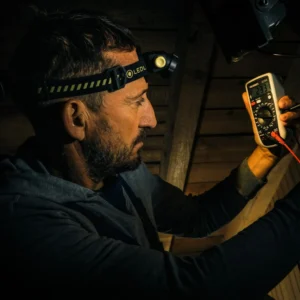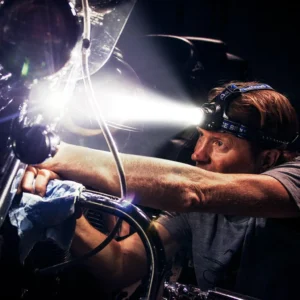What are the advantages of using headlamps for work
When it comes to illuminating your workspace, few tools are as versatile and efficient as the headlamp. Worn snugly on the forehead, a headlamp provides hands-free lighting that moves with you, casting light precisely where you look. Getting yourself a Work Headlamp will not only save you time but also make your work far more enjoyable be able to to have hands free directional light.

Headlamp Uses
This is particularly advantageous for tasks that require both precision and mobility, such as construction work, automotive repairs, or even detail-oriented crafts. Unlike stationary lamps, which can cast shadows or require frequent repositioning, headlamps ensure that your vision remains unobstructed and your focus sharp.
They’re also designed for comfort over long periods, making them an indispensable tool for lengthy projects or overnight work when natural light is scarce. With advancements in LED technology, headlamps now offer brighter light with longer battery life, making them a practical choice for professionals and hobbyists alike. With new recent advancement in head straps they are now more durable and longer lasting with anti slip compound included so no matter if you are in a wet or sweaty environment you’ll know you head torch will stay fixed to your head.
Headlamp Advancements
Headlamps have come a long way since their humble beginnings as simple torches strapped to the head. Today, they come in a variety of designs, sizes, and features that cater to different needs and preferences. Some headlamps are designed for maximum brightness, while others prioritise portability and weight. Some models offer adjustable straps and tilting heads for a more customised fit, while others come with additional features like waterproofing and red light for night vision and signalling. With such a wide range of options available, it’s important to consider your specific needs and intended use before purchasing a headlamp.

Headlamp Features to consider
One key factor to consider is the type of lighting technology used in the headlamp. LED lights have become the standard due to their energy efficiency, longevity, and brightness. Another aspect to consider is the level of brightness needed for your tasks. Some headlamps offer a range of brightness levels, while others only have one setting. Think about the activities you will be doing with your headlamp and choose accordingly. For example, if you need a headlamp for camping or hiking, you may want one with a higher maximum brightness setting to cover more ground in the dark. On the other hand, if you only need it for close-up work like reading or crafting, a lower brightness setting may suffice. Additionally, some headlamps offer a strobe or SOS function for emergency situations.
But what LED or overall construct do I need for my work headlamp?
We have found for the majority of work head torches such as close up work from 1cm all the way to 20m work environment we have found that its best to choose a headlamp with a nice broad floppy beam so there is no hot spot that will distort what you might be looking at. Other aspects to consider is the colour temperature of your LED, for those who are working in environments where they need every colour to “POP” like electricians and mechanics we would suggest something with a colour temp of anywhere from 4000-5000k which will render your colours more lifelike. For a more general use a cool white is going to be great around the 6000-6500k will be great to look at and lower outputs will seem much brighter with this cool white LED.
Comfort with your Headlamp
Comfort and fit are also important considerations when choosing a headlamp. Look for models with adjustable straps and lightweight designs to ensure a comfortable and secure fit on your head. Some headlamps also come with padded straps for extra comfort during extended use. Whatever your use we have a wide range of of headlamps to choose from at Brightnite and we are more than happy to hep when choosing or needing advice.
